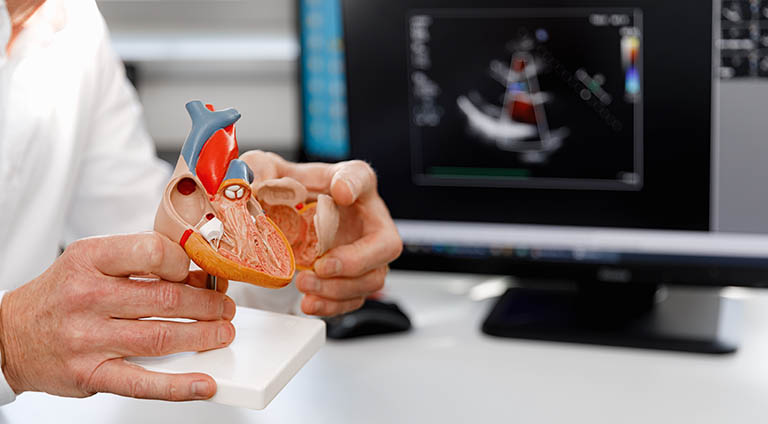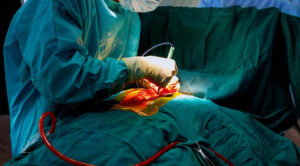What is LIMA RIMA Y Graft?
A LIMA RIMA Y graft is one of the most effective methods of Total Arterial Grafting in open-heart bypass surgery. It is formed from the following: the left internal mammary artery (LIMA) is linked with the left anterior descending (LAD) artery, and subsequently, the partially ‘standalone’ right internal mammary artery (RIMA) is linked to the LIMA, and also to a marginal artery of the left circumflex artery. For your information, LIMA is considered to be among the best graft procedures for effectively bypassing the LAD coronary artery. Well, RIMA also produces, more or less, similar results.
Some years ago, veins from the legs were used as a primary conduit for any heart bypass surgery, but it was observed that the longevity of the leg veins was no more than 8-10 years. They showed signs of rapid disintegration, as leg veins could not withstand the high pressure inside a human heart circulation. Therefore, the two main internal mammary arteries, viz. LIMA & RIMA were used as primary conduits for a bypass surgery. In the present times, cardiac or cardiothoracic surgeons perform total arterial grafting using both the left and right internal mammary arteries.
LIMA, or left internal mammary artery, is always considered the preferred conduit choice among leading cardiac surgeons worldwide for any CABG surgical treatment procedure. This is simply because it has better long-term potency than any other conduit or channel.
Two Main Advantages of Internal Mammary Arteries
- Apart from their location, these internal mammary arteries are already attached or connected to the main artery, the Aorta. Therefore, it is necessary to disconnect the other end and graft it onto the infected coronary artery.
- LIMA & RIMA arteries are increasingly durable in the long run, as they can withstand a pressure-intensive blood flow, unlike the saphenous vein. A majority of patients with a LIMA RIMA Y OFF CABG can easily lead a risk-free life of up to 25-30 years at a stretch. LIMA is considered the Gold Standard of CABG surgery, as it guarantees a better mortality rate, decreased morbidity rate, and significantly lesser myocardial infarctions when compared to patients who’ve got other types of grafts.
When is the need for a LIMA RIMA Y OFF CABG (Coronary Artery Bypass Grafting)?
- When there’s a stenosis in the left main coronary artery.
- When there’s a stenosis in the proximal circumflex and proximal left anterior descending LAD artery.
- Multiple vessel disease in asymptomatic patients.
- Multiple vessel disease with left anterior descending LAD stenosis in individuals with ‘reduced’ left ventricle function.
- Single or two-vessel disease and a substantial spread of Viable Myocardium in greater risk areas in patients with symptoms of persistent angina.
Note: In a two-vessel disease, the LIMA is generally connected to the left anterior descending (LAD) artery, and the RIMA is connected near to a left internal thoracic artery (LITA) and at a safe distance from the second target vessel. In fact, both these arterial grafts have a better survivability rate than venous grafts.
The Overall Surgical Technique
First and foremost, all patients receive general anesthesia per a standardized protocol. Next, surgery is performed by making an incision through the Sternum or breastbone and, thereby, opening up the rib cage. This process is called sternotomy. After the rib cage is opened and lifted to access the heart, the surgeon cuts through the thick pericardial ‘sac-like’ lining around the heart in a reverse-T fashion in the midline to access the heart itself. After that, harvesting the vein to be used as a healthy graft vessel begins. FYI, the coronary arteries are located on the front and back sides of the heart.
According to the standard norm, LIMA is first harvested and cut off from the origin to the distal region of bifurcation. Similarly, RIMA is cut off in the same manner. After heparinization, RIMA is removed as a free graft, and LIMA is divided at the last bifurcation. Eventually, the endothoracic fascia of the BIMAs is resected with a pair of surgical scissors. Both the arteries are placed on a thick pad of gauze, and an oblique 1-centimeter length incision is made in the LIMA, wherein the nearest end of RIMA is anastomosed with a continuous polypropylene stitch.
LIMA is performed to revascularize the anterior wall, and RIMA is used to revascularize the lateral and posterior walls. This particular surgical procedure provides additional length to reach a distant coronary artery, such as the descending posterior branch of the right coronary artery or the hind branch of the left heart ventricle. In some select cases, bilateral internal mammary artery (BIMA) Y graft is used with OP-CABG for some patients, as it is an appropriate procedure for CABG.
Benefits of LIMA RIMA Y Bypass Graft Surgery
- Smaller incisions help reduce the trauma and fear associated with heart bypass surgery, and the scar left by the incision takes less time to heal.
- The pain sensation is comparatively less during the healing or recovery process.
- Shorter recovery time and fewer follow-up procedures when compared to angioplasty.
- Lower risk of infection and improved blood flow to the heart.
Where in India can you get a LIMA Y Graft Surgery done?
There are so many cardiac institutes, cardiac research centers, and specialty heart hospitals in India that you’re confused. But, if you’re residing in the western part of the country, it would be suggested to look for the best heart surgeon in Surat, as this city in the state of Gujarat has some of the finest hospitals, heart care centers of excellence, medics and renowned cardiac surgeons. Here, a name to consider is Dr. Aditya Lad, who possesses vast expertise in niche areas like heart transplant, heart bypass surgery, or CABG and LIMA-RIMA Y graft surgery, to name a few. Above all, cost-effectiveness matters for an average-income family, always looking for the desired results within a stipulated budget.





